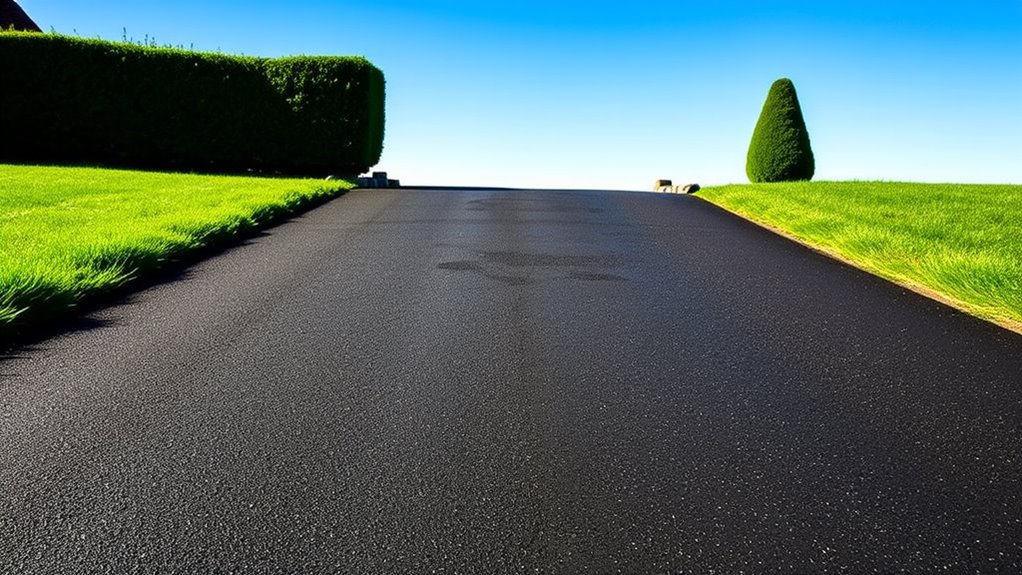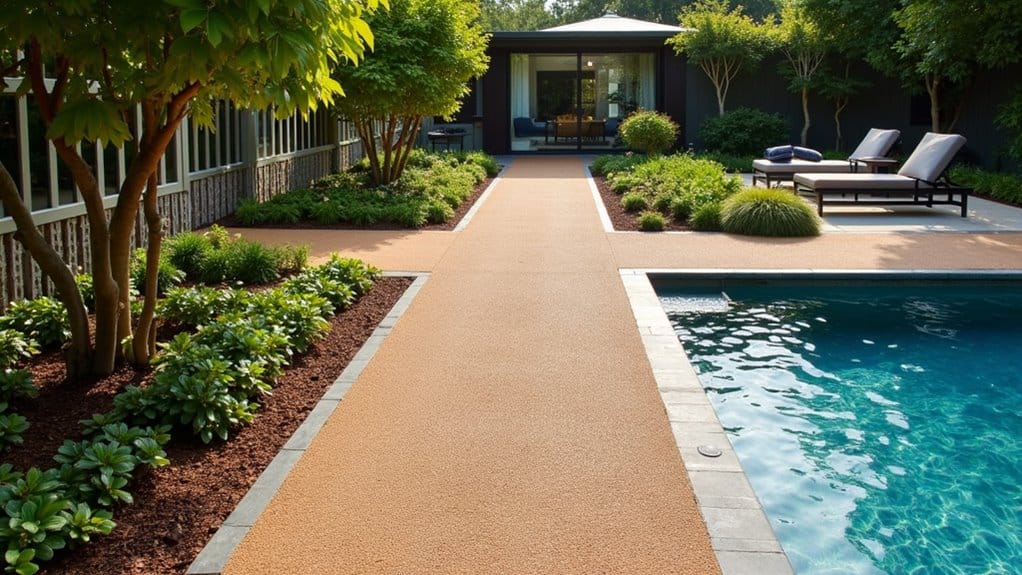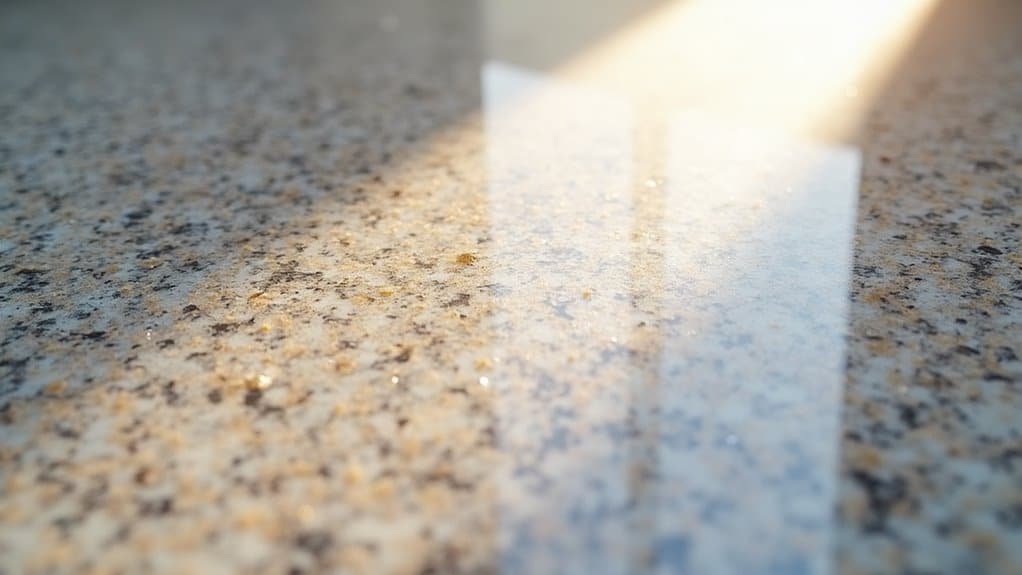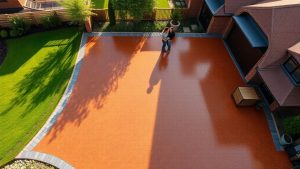To keep your tarmac driveway looking fresh, regularly clear away leaves and dirt, and use gentle cleaners specifically made for tarmac. Check for cracks and fix them quickly to prevent further damage. It's a good idea to apply sealant every 3-5 years to protect against UV rays. Avoid parking heavy vehicles in the same spot regularly, as this can cause deformation; instead, try to vary your parking locations. Consider using sustainable materials for added longevity. These straightforward steps can significantly enhance the durability and appearance of your driveway.
Table of Contents
ToggleKey Takeaways
- Regularly clear away leaves and dirt to prevent stains and keep your driveway looking smart.
- Use gentle tarmac cleaners and rinse well to avoid any residue.
- Address cracks quickly and apply sealant every 3-5 years for added protection.
- Avoid parking heavy vehicles in the same spot to stop any sinking or deformation.
- Consider using eco-friendly materials and permeable paving for better durability and a more attractive look.
Initial Setup and Preparation for Your Tarmac Driveway
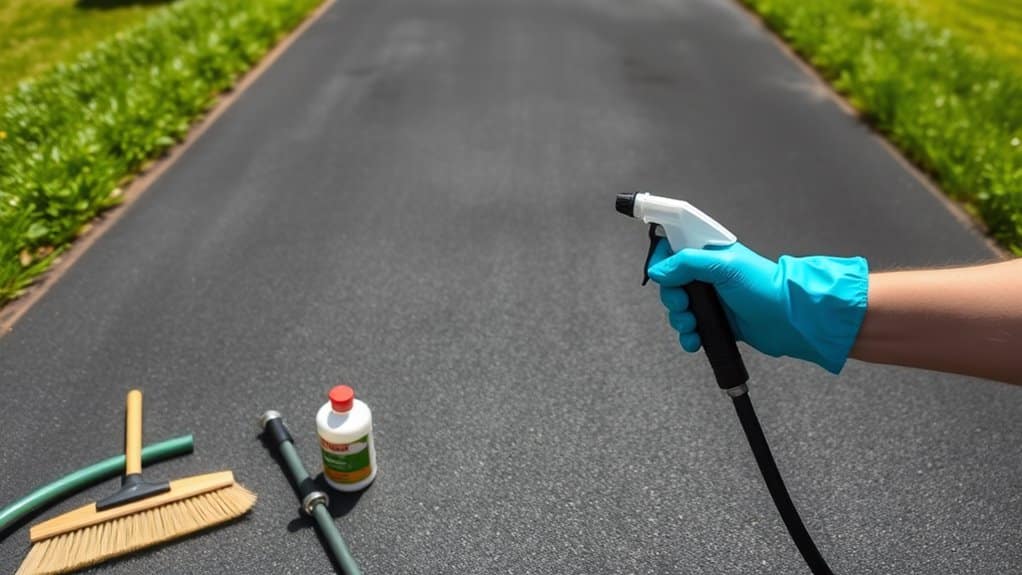
When you're ready to install your tarmac driveway, start with careful planning and design, as a solid foundation is crucial for a durable surface. Measure the area, taking into account the shape, size, and any obstacles. Check local regulations for necessary permits and sketch the layout to ensure proper drainage.
Evaluate the existing soil conditions to confirm stability, which is essential for supporting the tarmac. Clear the site of grass and debris, then excavate to a depth of 8-10 inches.
Install edge restraints to prevent displacement and compact the subgrade for stability. Lay a 4-6 inch layer of crushed gravel followed by a sand bedding. Proper care can extend the lifespan of your driveway, ensuring a long-lasting driveway. Make sure each layer is level and compacted to avoid future settling, ensuring a long-lasting driveway.
Regular Cleaning Techniques to Maintain Appearance
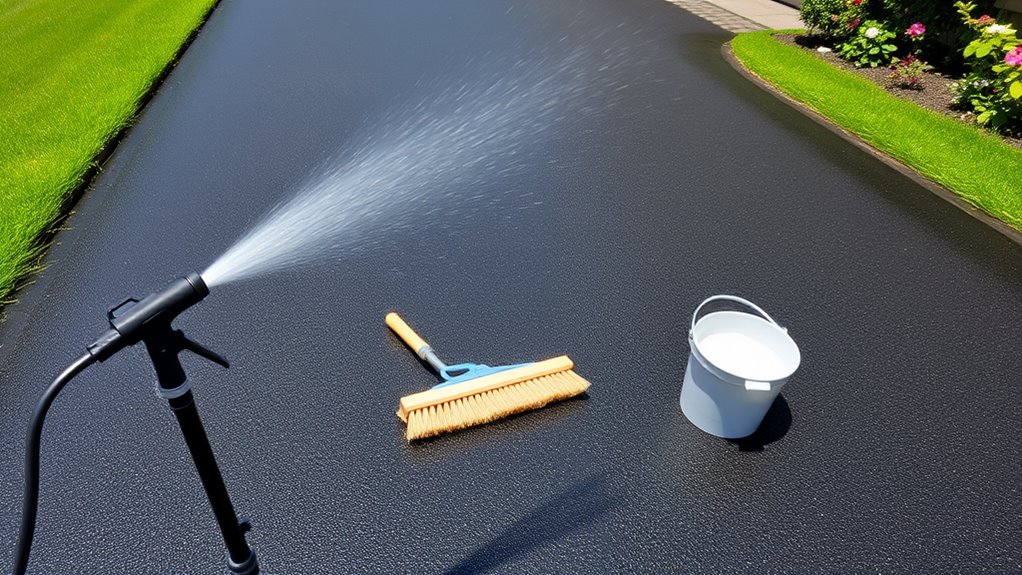
To keep your tarmac driveway in top condition, regularly remove debris like leaves and dirt, which can lead to stains and moss. Use mild cleaners for effective results, and rinse thoroughly to avoid any residue. This simple routine not only helps maintain the appearance but also makes future cleaning easier. Regularly cleaning your driveway can help prolong its lifespan by preventing the buildup of harmful substances.
Clear Debris Regularly
A clean tarmac driveway boosts your property's curb appeal and protects its longevity. Regularly managing debris is crucial; use a stiff broom or leaf blower to clear away leaves, dirt, and twigs at least once a week. This helps prevent dirt buildup, staining, and excessive wear on your vehicle's tyres and paintwork. Additionally, establishing a regular cleaning regimen can further enhance the appearance and durability of your driveway.
For larger debris like branches or stones, remove them with garden tongs or a rake to avoid scratches. Dispose of debris properly to keep the area tidy and deter pests. Also, check for loose dirt regularly and clear it with a soft broom or blower.
Use Mild Cleaners
Using mild cleaners is essential for keeping your tarmac driveway looking its best without causing harm. Choose products specifically designed for tarmac to maintain its integrity.
Here are some effective cleaning tips:
- Combine water with a mild detergent for general cleaning.
- Look for eco-friendly options for a greener choice.
- Always test any cleaning solution on a small, hidden area first.
Steer clear of harsh chemicals, as they can damage your driveway's surface.
Apply your chosen cleaner evenly, allowing it to sit for 5-10 minutes to maximise its effectiveness. A proper cleaning routine not only helps your driveway look new but also extends its lifespan.
Regular maintenance with gentle solutions ensures your tarmac stays in top condition for years.
Rinse Thoroughly After Cleaning
After applying a mild cleaner to your tarmac driveway, it's crucial to rinse thoroughly for the best results.
Start rinsing from the highest point and work your way down to prevent dirt and water from pooling. A garden hose with a wide nozzle or a low-pressure setting on a pressure washer will distribute water evenly without damaging the tarmac.
Rinse regularly according to your cleaning schedule to ensure all cleaning agents and debris are removed. Use overlapping strokes to enhance grime removal, and check for any remaining stains afterward.
Allow the driveway to dry completely before sealing to ensure optimal protection and maintain its clean appearance for years to come.
Effective Stain Removal and Repair Methods
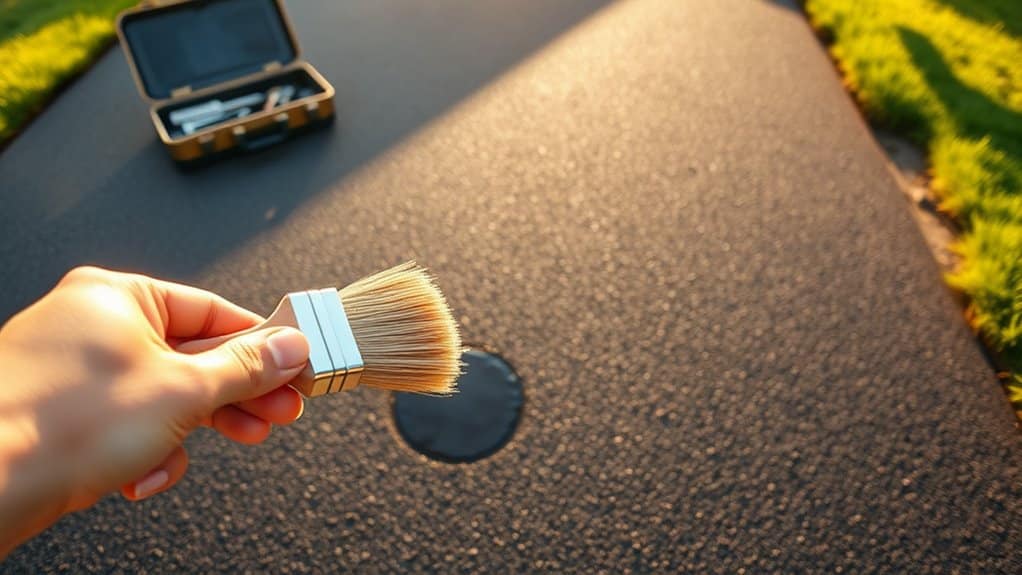
How do you effectively tackle stubborn stains on your tarmac driveway? Start by identifying the type of stain to choose the right repair method. Here are some common techniques:
- Oil and Grease: Absorb excess with cat litter or sawdust, then scrub with dish soap and warm water.
- Rust: Treat with lemon juice or a rust remover, scrub, and rinse thoroughly.
- Paint: Scrape off any excess, apply paint thinner, and rinse well.
For repairs, fill cracks with a tarmac repair compound, address potholes as soon as they appear, and apply a sealant every 3-5 years.
Regular maintenance is essential—remove stains promptly and use protective measures to keep your driveway looking its best.
With the right techniques and a proactive approach, you can maintain the appeal of your tarmac driveway for years.
Maintenance Strategies to Prevent Damage
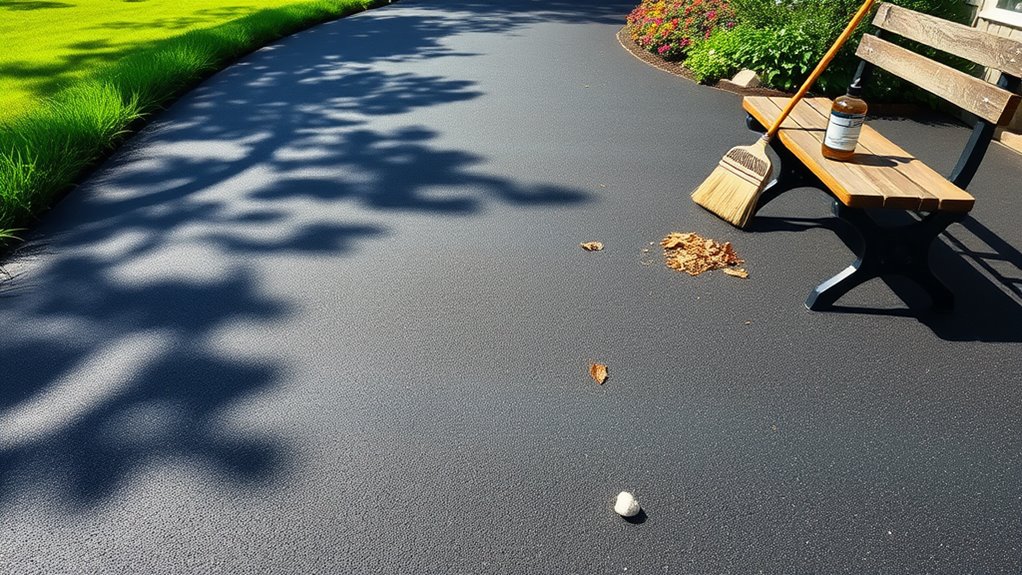
Maintaining a tarmac driveway may seem simple, but effective strategies can significantly extend its lifespan and prevent expensive repairs.
Start with regular sweeping and daily removal of debris to keep the surface clean. Ensure proper grading and install drainage systems to manage water flow, which helps maintain the driveway's structure.
Avoid parking heavy vehicles in the same spot and spread the weight evenly to prevent deformation. Check for cracks regularly and address them promptly with repair compounds.
Additionally, apply sealants every 3-5 years to protect against UV damage and weathering. By staying proactive and tackling issues quickly, you'll keep your driveway in good condition for years to come.
Enhancing the Driveway's Appearance and Protection
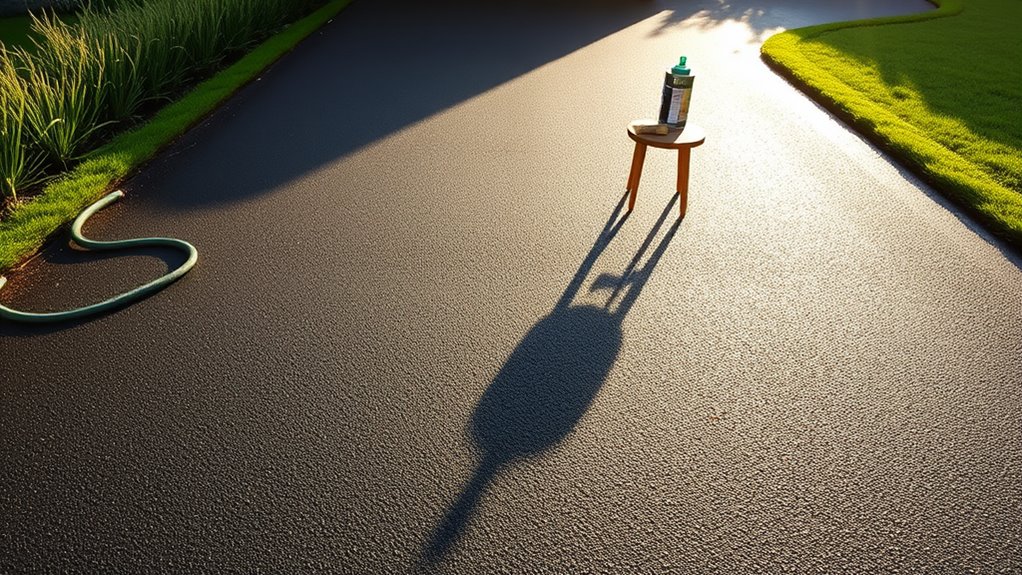
Improving the look and protection of your tarmac driveway involves smart design choices and practical steps. Here are some effective strategies to enhance your driveway:
- Select Edging Materials: Consider using block paving or natural stone to create clear boundaries and prevent movement.
- Incorporate Contrasting Borders: Adding gravel or slate chips can break the monotony of the tarmac and introduce visual appeal.
- Install Lighting: LED or solar-powered lights can boost safety and create a welcoming atmosphere.
These enhancements not only elevate the aesthetic of your driveway but also contribute to its durability and longevity.
Long-Term Care and Planning for Your Tarmac Driveway
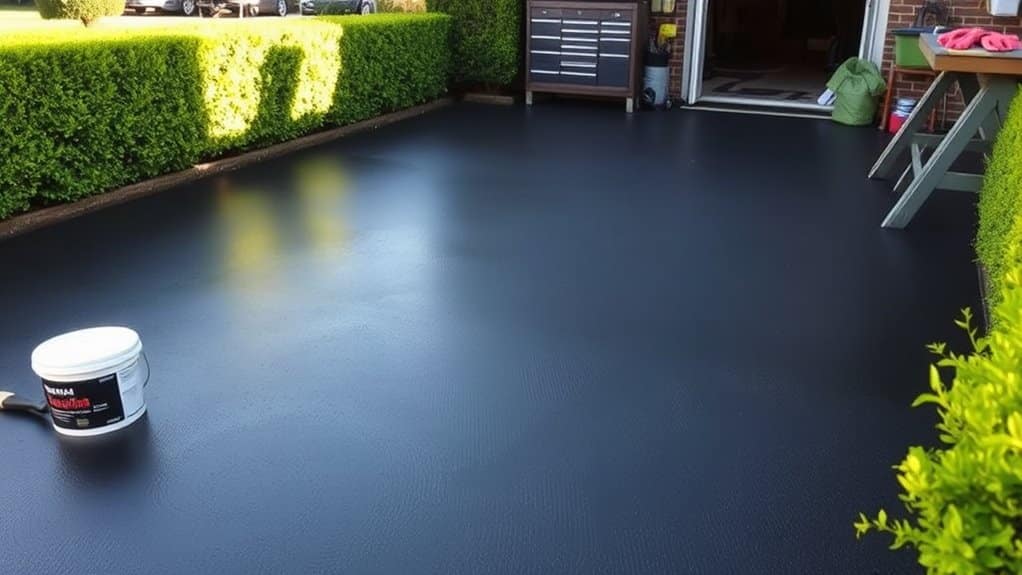
When planning for the long-term care of your tarmac driveway, think about how its future use may affect its condition.
Tailoring your maintenance to suit local weather conditions will help safeguard your investment from environmental wear.
It's also wise to set aside a budget for regular maintenance, ensuring you're ready for any repairs that might arise, so your driveway remains in excellent condition for years to come.
Future Usage Considerations
To ensure your tarmac driveway remains in good condition for years to come, it's important to have a solid care plan in place.
Here are three essential considerations for future usage:
– Regular Maintenance Schedule: Tailor your cleaning and sealing routine to match the level of traffic you expect.
For instance, if you have frequent visitors, more regular maintenance may be necessary.
– Load Management: Be cautious with heavy vehicles.
Limiting their use can help prevent damage and prolong the life of your driveway.
– Prompt Repairs: Don't delay in fixing cracks and stains.
Tackling these issues swiftly can prevent water from seeping in and causing more serious problems down the line.
Climate Adaptation Strategies
Maintaining a tarmac driveway requires proactive measures to tackle the challenges of a changing climate. To boost resilience, consider using sustainable materials like biogenic asphalt and warm mix asphalts, which help lower carbon emissions.
Implementing permeable paving can improve drainage and reduce flooding during heavy rain. Additionally, incorporating heat-reflective coatings or shading structures can help counter the urban heat island effect.
Regular maintenance, such as clearing debris and applying UV-resistant sealants, keeps your driveway looking good and extends its lifespan. Adjust your maintenance routines according to the seasons to accommodate temperature changes.
Budgeting for Maintenance
Budgeting for the maintenance of your tarmac driveway might seem daunting, but it can be simple if you take a systematic approach.
Begin by forecasting your budget to anticipate costs effectively. Here are some key considerations:
- Major Repairs: Set aside funds for significant restoration every ten years.
- Preventive Measures: Budget for regular crack sealing and sealcoating to prolong the lifespan of your driveway.
- Buffer Funds: Include a 10% contingency for unexpected price increases.
Conduct a thorough cost analysis, using local rates to estimate your repair and maintenance expenses.
Regularly review your budget based on the condition of your driveway and the cost of local services.
Frequently Asked Questions
How Often Should I Reseal My Tarmac Driveway?
Check your driveway maintenance routine; resealing is usually needed every 3 to 5 years. Factors such as local weather, the amount of traffic, and the overall look of the driveway can affect how often you should reseal your tarmac. For instance, if you live in an area with harsh winters or heavy rainfall, you might need to reseal more frequently.
Can I Drive on a Newly Installed Tarmac Driveway Immediately?
You shouldn't drive on a newly installed tarmac driveway straight away! It's like stepping on a freshly baked cake before it's set. To avoid damage, allow the tarmac to cure for at least 72 hours. Stick to this guideline for the best results.
What Is the Best Time of Year for Tarmac Installation?
For tarmac installation, it's crucial to consider the weather. The best time is during warm, dry conditions, as this ensures proper setting. For example, late spring and early autumn in the UK often provide ideal temperatures. Sticking to these optimal conditions not only enhances durability but also saves you money on future repairs.
How Do Temperature Changes Affect Tarmac Driveways?
Think of your tarmac driveway like a living thing. Temperature changes make it expand and contract, which affects its ability to withstand the weather. In hot weather, the tarmac can soften, while colder temperatures may cause cracks, threatening its strength. Regular maintenance is key to keeping it in good shape!
Is It Safe to Park Heavy Vehicles on Tarmac?
Parking heavy vehicles on tarmac isn't advisable due to weight restrictions. Excessive weight can damage the tarmac, causing cracks or even sinking. To safeguard your driveway, consider using load-spreading methods, like wooden boards or gravel, or reinforcing specific areas designated for heavy vehicles.
Conclusion
In summary, maintaining your tarmac driveway is much like caring for a garden; with proper attention, it can flourish and boost your home's appearance. Regular cleaning, prompt repairs, and protective treatments will keep your driveway looking neat and welcoming. By following these simple steps, you'll not only keep it looking good but also prolong its life. Stay on top of maintenance, and your tarmac will remain a smooth, inviting surface for visitors for many years.
Prepare the perfect base for your resin bound stone installation and discover the crucial factors that ensure lasting durability.
Know where resin bound surfacing can transform spaces for both residential and commercial use, and discover the countless benefits that Read more
A stone carpet combines beauty and resilience in flooring, but what makes quartz floors uniquely beneficial? Discover the secrets behind Read more

